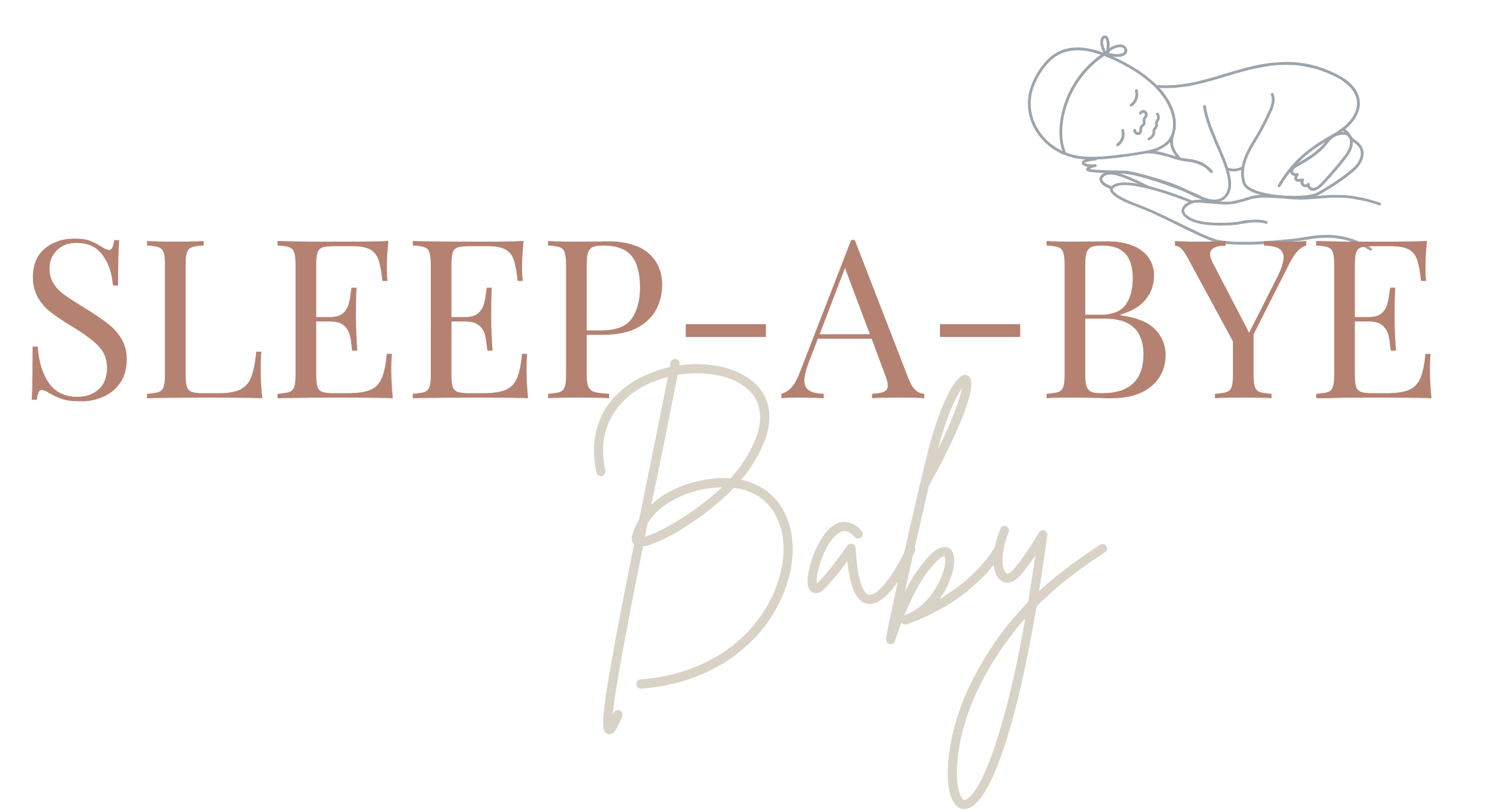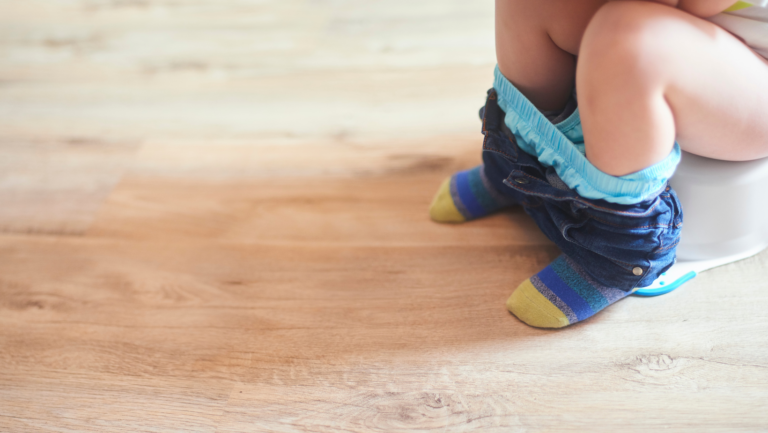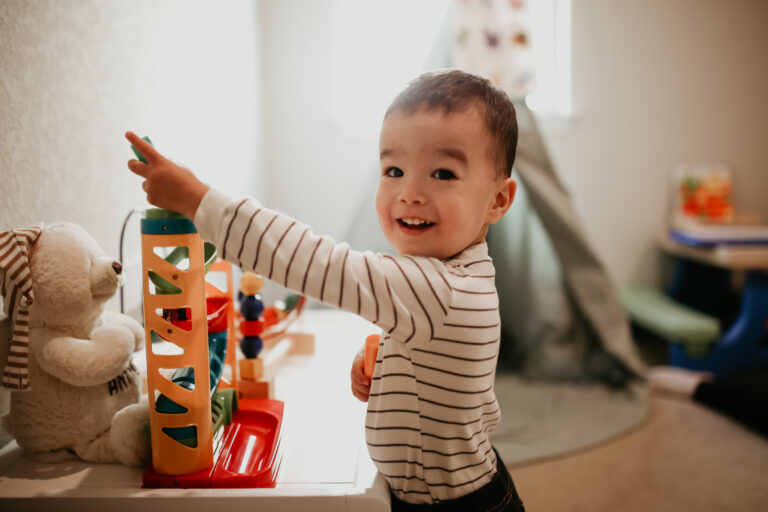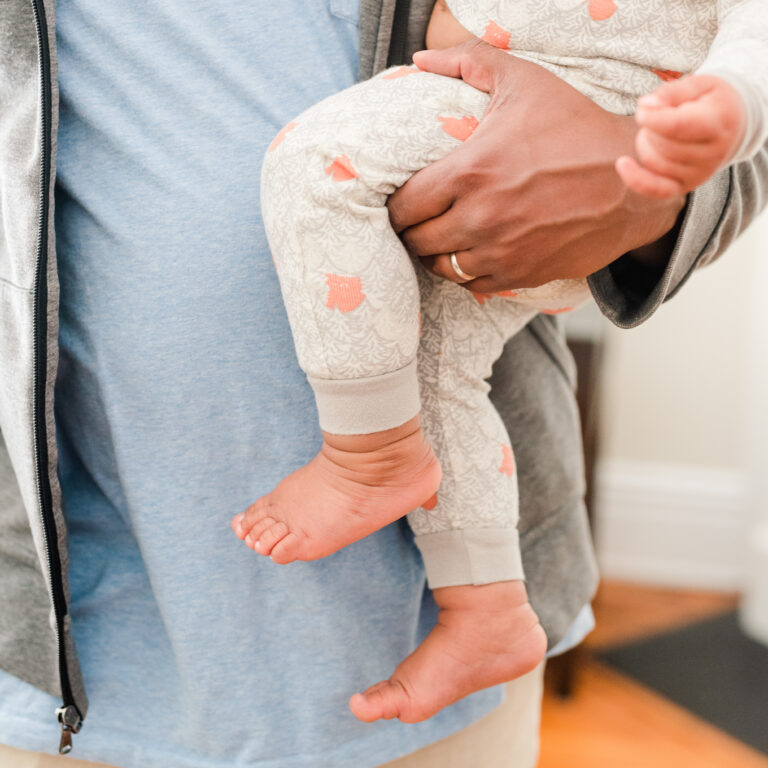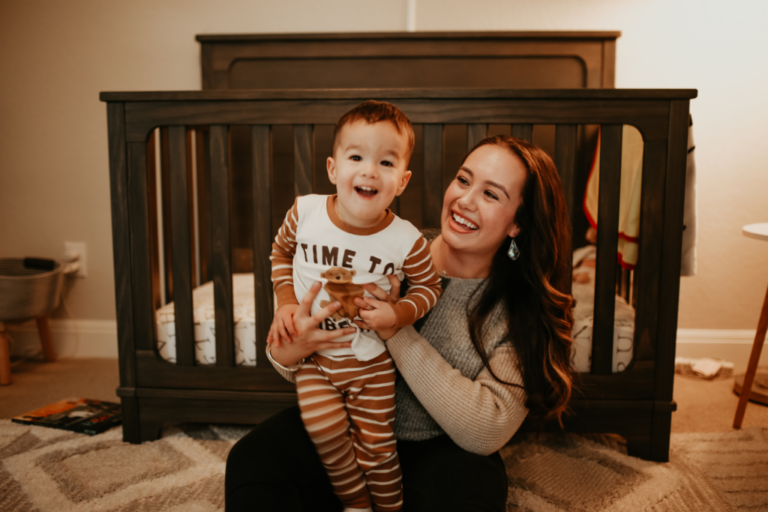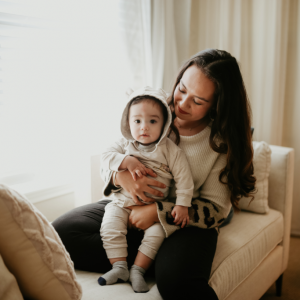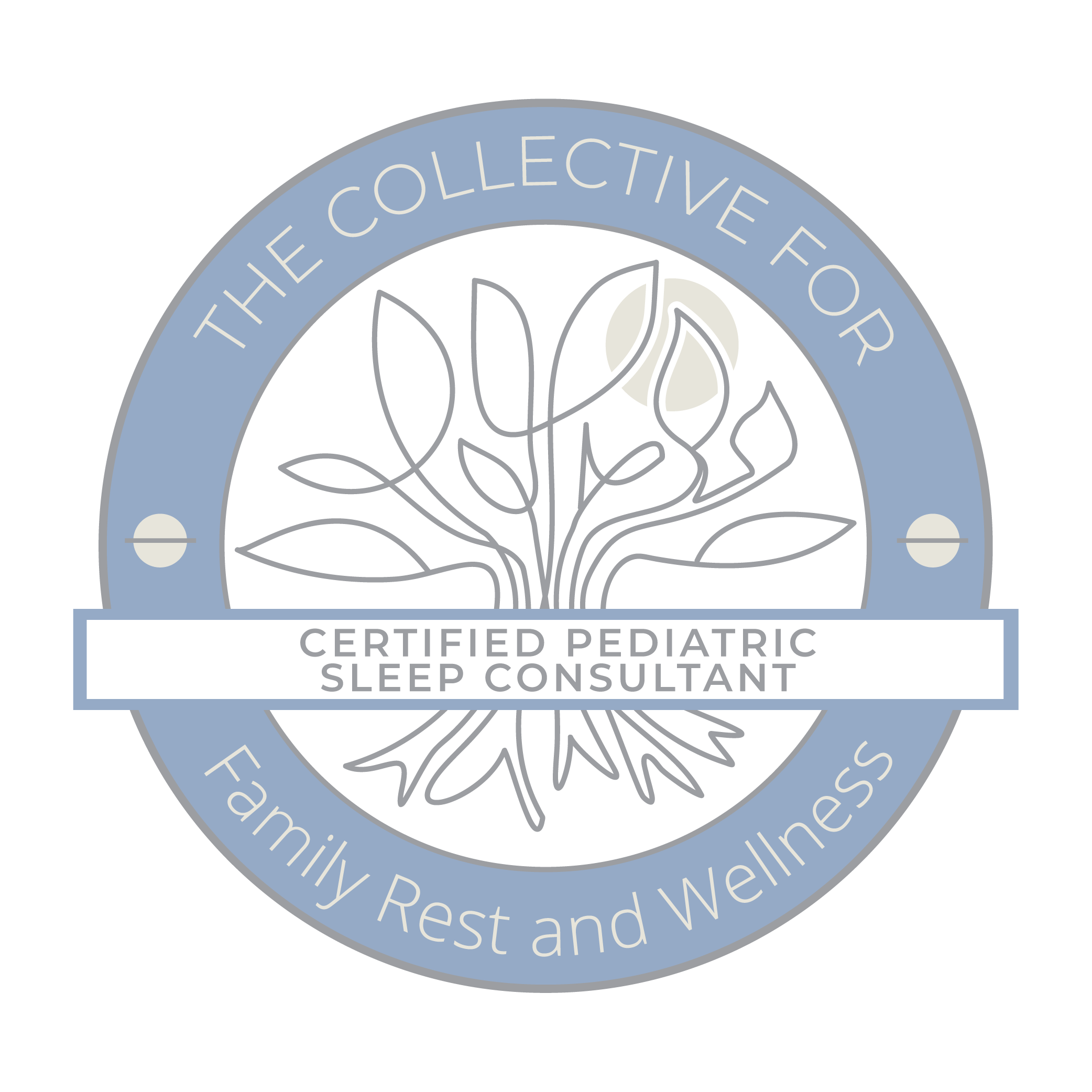When parents come to me inquiring about sleep training their child, one of the first statements I hear is “but I do not want my baby to cry!” I understand! No one wants to endure hearing their baby cry – for anything! Even if it is something good for them (ie: going to a wellness visit, starting their first week of daycare, etc.). As a mother, it is ingrained in us biologically to comfort our children during those uncomfortable times.
Being a NICU nurse for 3+ years, I hear babies cry A LOT. I hear my patients crying when I go to work, and I hear my own children crying/throwing tantrums when I get home. Crying is something that I am used to. So, when I had my first son, I thought I was not going to be affected by his crying. But soon after he was born, I remember him letting out this intense cry while getting a heel stick done, and I BROKE down. This was partly due to the crash of hormones I was experiencing, but also due to the fact that THIS little human was MINE.
It was then I realized, it did not matter how many cries I was exposed to before – there is nothing that affects you more than the crying of your own child. So when I say I have endured the discomfort and the anxiety of my children’s cries, I have experienced it VERY deeply. This was why the idea of sleep training my first son at 4 months old was so daunting to me! How could something “so good” put my baby in such distress. This was, of course, my prior way of thinking, and I wish I would have realized that our little ones cries are their main form of communication – and that is NOT a bad thing.
Crying is part of the human experience
When adults communicate, we are able to talk through our feelings, and our emotions. We all have that one friend who is the “good listener.” Very willing to hear us out, not interrupt us and let us just express ourselves – giving us support when we need it while also letting us talk or even cry it out sometimes. Now imagine if that friend all of a sudden starts interrupting us and tries to fix the situation quickly by giving us advice. They may think they are helping, but sometimes it is okay to not be okay. This is what happens when we do not let our children cry. Sometimes we just need to let them work through their emotions, whether good or bad.
This is NOT to say that if your baby is crying that we should not intervene when necessary (ie. when they hurt themselves, when they have a fall, etc.)! It is the COMPLETE opposite. However, just like the “good listener” friend that is always willing to hear us out, we must be able to take a step back and hear our children out as well when intervention is not immediately necessary or when there is no imminent danger.
Crying is our baby’s MAIN form of communication. They cry when they need their diaper changed, when they are hungry, when they want us to hold them, and when they are sleepy! Basically, if our babies could just straight out tell us “MOM I am hungry!” that would make things a lot easier. But of course, our babies have not mastered the human language yet and are still learning how to express their needs through crying. In situations like this, crying should not be seen as BAD but as a good form of communicating their immediate needs.
On the other hand, children also cry when they are hurt and when intervention is needed immediately. Whether they have taken a fall while running around outside, or got bit by an ant, our babies will cry to let us know that they are in distress and need help NOW!
Then there is the “grey” area of crying. This crying occurs when there is a change in their environment, routine, or external stimuli that is essential for their well-being, but may still be uncomfortable for them – including parents. Good examples include crying:
- At a doctor’s visit
- On their first day of daycare
- Due to separation anxiety
- While in the car seat – because who really wants to be restrained for 30 minutes at a time!
- During sleep training
When our children go to their doctor’s visit, they will have to get their ears checked and their heart listened to – even though they may not like the new room they are sitting in, or the random stranger assessing them, getting their wellness check is important for their health.
When our children are strapped into their car seat, they may cry the entire time because they hate being restrained – but this restraint is necessary to keep them safe while in the car.
The same goes for sleep training.
Sleep training and crying
Whenever I had seen ads and posts about “No Tear” sleep training or “Gentle” sleep training, I always wondered how these forms of sleep training could result in no crying at all. I have come to realize, however, that these “labels” in the sleep training world are used as marketing terms – that unfortunately do not follow through with their promises.
When our babies are allowed to independently put themselves to sleep, there will be some crying in the process. There is NO sleep training method out there that results in no tears. There are gradual, low tear methods such as the Pick-Up, Put Down Method or the Soothing Ladder method, that focus on intervening more quickly – BUT there is no method out there that results in no crying at all.
Sleep training works as a behavioral intervention by changing the way we respond as parents to our chid’s cries while also encouraging them to self-soothe and work through the process. Sleep training does NOT mean that we ignore their cries, but rather we allow them to be more independent in putting themselves to sleep by offering support when needed. Read more about what sleep training is NOT here.
This degree of support looks very different for each family and for each child. One family could come to me and say that their baby’s cries do not trigger them and need a sleep training method that has fast results; while another family could be very sensitive to their child’s cries and want something slow and gradual. Also, crying is CHILD specific, not method specific. Meaning that one child could be more agreeable in nature to change in their environment, and respond to sleep training better when compared to another child who is more strong-willed and resistant to change.
At the end of the day, independent sleep is a new skill that our little one’s are learning to master. During the process of learning this skill, it is important that we try not to “fix” the situation by intervening too early when our child is upset. As psychiatrist Dan Siegel says, “feeling felt” is one of the most important needs children have. When a child is able to express their emotions and be heard, then you have allowed them to work through their emotions which aids in growing in any new skill that they are learning.
During my 1:1 sleep support, I take into account parent’s preferences, responses to crying, lifestyle and child’s temperament. For parents that do feel highly sensitive to their baby’s crying, I also like to delve in deeper as to why those triggers are there.
Figuring out personal triggers for crying
As a maternal mental health advocate, and having experienced postpartum anxiety myself, one of my primary goals as a sleep consultant is to not only help children get better sleep, but also make sure that I establish a good rapport with parents to make sure they are taking care of mentally.
Becoming a parent is one of the most beautiful things someone can experience, but it can also be stressful and may bring up triggers that you did not realize were there.
After being diagonised with postpartum anxiety, I worked through a lot of baggage that had built up from past experiences and traumas. It was then I realized that my anxious thoughts and overstimulated response to my babies’ cries had more to do with me, that it had to do with them. On top of that, losing sleep in the process did not help me regulate my emotional response either.
This is not to say that you have to be diagnosed with a perinatal mood and anxiety disoder (PMAD) to feel “triggered” by your baby’s crying – many women are affected by this without even realizing it. It is now trying to understand WHY you are feeling a certain way about crying. There are several questions you can ask yourself to get to the root of this. When crying occurs do you feel that:
- You are a bad parent and do not know your child’s needs?
- The emotion that your child is expressing as soon as it begins?
- Your baby is the only one who cries and they cannot regulate their crying themselves?
- You feel more worthy when you can stop your child from crying?
- You struggle with big emotions such as anger/annoyance?
- Your inner child is triggered since you had needs that were not met in your childhood?
- The attachment between you and your child will be damaged if you allow them to cry?
Did you notice in all of these questions, that it had nothing to do with the child, but everything to do with how we perceive our own past experiences or how we view ourselves as parents?
Remember that not all crying is BAD and your worth is NOT found in how much or in how little your baby cries. You are the best parent for your child and you know what is best for them. I encourage reframing your thoughts around crying that focus on positive outcomes such as:
- I have met all their basic needs so I know they are not crying for that reason
- I accept that my baby does not have independent emotional intellegence and they need my help to regulate them
- My child’s crying is their way of expressing their emotions and communicating – it is not something to be fixed, just felt.
- My worth is not found in how much my baby cries – my worth is found in myself.
Mama you are not in this alone. Parenting may be hard, but getting good sleep does not have to be!
If you are interested in working 1:1 with me to help support you in your child’s sleep training journey book a discovery session with me so we can go over options.
Remember that sleep training is very personal to each and every family unit and is CHILD and family specific! If you have questions about the type of support you will need, please go to my support options page, to learn more.
Live, Laugh, & Sleep Well Honeys!
